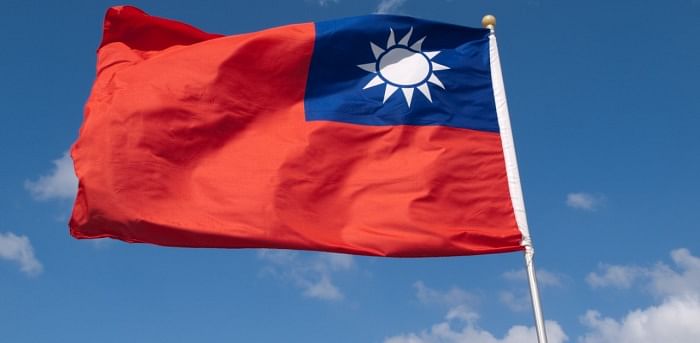
The international community praises Taiwan’s courage in maintaining independent sovereignty and statehood. In fact, when Indian nationalists were fighting for independence a century ago, their stories inspired the people of Taiwan, when the island was under Japanese colonial rule. Japan after the Meiji Restoration rapidly transformed into a modern state. Japan first acquired Taiwan as a new colony after the war with the Qing Empire of China. After defeating Russia in 1905, Japan rose to the world stage, becoming a new member of the imperial powers. People all over Asia saw Japan as a role model for achieving independence and national pride. Independence fighters from China, Korea, India, and Southeast Asia went to Japan and Japanese territories to learn and to seek support. Being a colony of Japan, Taiwan had strong cultural and economic connections with China and Southeast Asia, serving as a shelter and even training base for independence fighters who were planning revolutionary campaigns at home. Sun Yat-Sen of China, Aung San of Burma, Rash Behari Bose and Subhas Chandra Bose, all founders of nationalist armies, came to Taiwan.
In the 1920s, Taiwanese intellectuals were quite familiar with the Swadeshi movement of India and Sinn Fein’s fight for independence in Ireland. Prominent figures of the Indian independence movement -- Mahatma Gandhi, Jawaharlal Nehru and Subhas Chandra Bose – also appeared in Taiwanese media. Rash Behari Bose visited Taipei in May 1943 during his trip to Southeast Asia. Their stories were circulated or studied by both Taiwan’s anti-colonialism campaigners as well as even Japanese bureaucrats who served the empire.
Among all the independence movement leaders of India, Subhas Chandra Bose has a special connection with Taiwan, not just because he visited the island more than once, but because he eventually died there. When he boarded the Japanese submarine in the Indian Ocean in April 1943, he was first transferred to Indonesia and then took a plane to Taiwan. His flight landed in Taihoku (Taipei) airport on May 14, 1943. This was the first time he stepped on the island and on Japanese territories.
On August 18, 1945, Subhas Chandra Bose flew to Taiwan again. This time, his plane landed in Taipei for refueling, then departed either for Japan or Manchuria. Unfortunately, the plane crashed during take-off. Bose suffered severe burns and was taken to the Southgate Military Hospital for treatment. He died that night in hospital. The military hospital where Bose spent his last moments is today the Taipei Municipal Heping Hospital, which shot into prominence during the Severe Acute Respiratory Syndrome (SARS) outbreak of 2003. Few people today know that this is the site where Bose slept forever.
When Bose flew to Taiwan, he was accompanied by Lt Gen Tsunamasa Shidei of the Japanese Kwantung Army, and Bose’s own aide Habib ur Rahman, chief of staff of the Indian National Army in Singapore. Lt Gen Shidei was severely injured and died in hospital the same day, while Habib ur Rahman survived the crash and accompanied Bose in hospital till the latter’s death. It is said the plane carried a huge amount of gold and jewels donated by overseas Indians for the independence movement. After the plane crash, the Japanese military sealed the airport and mobilised female students from nearby high schools to search and collect all the luggage spread along the crash site. All the treasures and related documents, along with the ashes of Subhas Bose, were later transferred to Tokyo and have been preserved there till today.
In September 1945, a few weeks after the plane crash and one month before the nationalist government of China formally assumed jurisdiction over Taiwan, British India sent two investigators to Taiwan to examine the plane crash and the death of Bose. In August 1946, Harin Shah, a journalist from Bombay (now Mumbai), came to Taiwan to investigate Bose’s death. His notes and photos were compiled into a book titled “The Gallant End of Netaji” and published in 1956. The book was the only one containing the first-hand observations of those who were with Bose during the last moments of his life.
Taiwan’s interest in India has substantially increased in recent years, thanks to the ‘New Southbound Policy’ launched by President Tsai Ing-wen in 2016. Given the increasing military and economic tensions with China, many in Taiwan have started to see India as a new strategic partner as well as a huge market. Yet, the connections between Taiwan and India can trace back to a century ago, when the stories of Indian independence movements inspired many Taiwanese intellectuals who shared the same values of anti-colonialism. Independence fighters such as Rash Behari Bose and Subhas Chandra Bose had their footprint in Taiwan. More stories like theirs remain to be discovered by historians in both India and Taiwan.
(Li-fu Chen is Professor at Aletheia University of Taiwan; Mumin Chen is Professor, National Chung Hsiung University of Taiwan, and currently works at Taipei Economic and Cultural Centre in India)